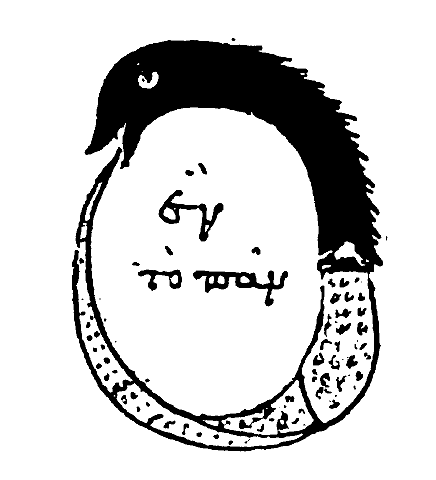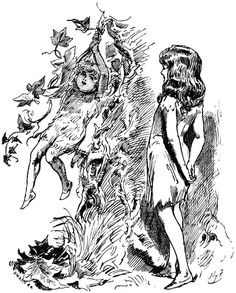I have reordered time. I have turned the world upside down, and I have done it all for you!
This self-replicating program will emit its own bytecode when run:
@q ( -> ) ;&end ;q &l LDAk #18 DEO INC2 GTH2k ?&l &end
uxnasm src.tal seed.rom && uxncli seed.rom > res.rom
This cyclical self-replicating program will emit a program that prints ying and which emits a program like itself that will print yang, which in turn will emit a program that prints ying again, and so forth:
@y ( -> ) [ LIT2 "y 19 ] DEO [ LIT2 &c "ai ] SWPk ,&c STR2 #19 DEO [ LIT2 "n 19 ] DEO [ LIT2 "g 19 ] DEO ;&end ;y &w LDAk #18 DEO INC2 GTH2k ?&w &end
uxnasm yingyang.tal ying.rom && uxncli ying.rom > yang.rom
This quine program will emit a second program that emits its own bytecode as hexadecimal ascii characters, which is also a valid program source:
a001 32a0 0100 b460 000b a020 1817 2121 aa20 fff2 0004 6000 0006 8004 1f60 0000 800f 1c06 8009 0a80 271a 1880 3018 8018 176c
uxnasm src.tal seed.rom && uxncli seed.rom > src.tal
This ambigram program executes the same backward or forward, every single opcode is evaluated, and prints the palindrome "tenet". It is my entry to BGGP1:
1702 a018 a002 a074 a002 0417 1702 a018 a002 a065 a002 0417 1702 a018 a002 a06e a002 a018 a002 1717 0402 a065 a002 a018 a002 1717 0402 a074 a002 a018 a002 17
uxnasm src.tal turnstile.rom && uxncli turnstile.rom
This short ambigram prints "6" and halts.
80 c5 36 17 36 c5 80
uxnasm 6.tal 6.rom && uxncli 6.rom
This cursed ambigram also prints "6", but will only work at exactly 54 minutes and 18 seconds, any hour of the day. It is my entry to BGGP6:
80 c5 36 17 36 c5 80
uxnasm 6c.tal 6c.rom && uxncli 6c.rom
This self-replicating program produces exactly 1 copy of itself, names the copy "4", does not execute the copied file, and prints the number 4. It is my 19 bytes entry to BGGP4:
|a0 @File &vector $2 &success $2 &stat $2 &delete $1 &append $1 &name $2 &length $2 &read $2 &write $2 |100 [ LIT2 13 -File/length ] DEO2 INC [ LIT2 -&filename -File/name ] DEO2 INC SWP .File/write DEO2 [ LIT2 "4 18 ] DEO &filename "4
uxnasm src.tal seed.rom && uxncli seed.rom

This polyglot program is both a valid tga image, and a valid rom that will print that same image. It is my entry to BGGP2
|20 @Screen &vector $2 &width $2 &height $2 &auto $1 &pad $1 &x $2 &y $2 &addr $2 &pixel $1 &sprite $1 |100 @length [ 40 ] @header [ 01 01 ] @color-map [ 0000 3000 20 ] [ 0000 1000 1000 1000 0820 ] @description $40 @color-map-data [ 0000 00ff ffff ffff $aa !program $b ] @body [ 0101 0101 0101 0100 0001 0101 0101 0101 0101 0101 0101 0000 0000 0101 0101 0101 0101 0101 0100 0000 0000 0001 0101 0101 0101 0101 0100 0101 0101 0001 0101 0101 0101 0101 0100 0101 0101 0001 0101 0101 0101 0101 0100 0001 0100 0001 0101 0101 0101 0101 0101 0001 0100 0101 0101 0101 0101 0101 0000 0101 0101 0000 0101 0101 0101 0100 0101 0101 0101 0101 0001 0101 0101 0100 0100 0101 0101 0101 0001 0101 0101 0100 0100 0101 0101 0001 0001 0101 0101 0100 0101 0001 0101 0001 0001 0101 0101 0101 0001 0001 0100 0100 0101 0101 0101 0100 0100 0001 0100 0001 0001 0101 0101 0001 0101 0101 0101 0101 0100 0101 0101 0000 0000 0000 0000 0000 0000 0101 ] @program ( -> ) ( print 2 ) [ LIT2 "2 18 DEO ] ( | draw tga ) #0010 DUP2 .Screen/width DEO2 .Screen/height DEO2 #0f08 DEOk INC INC DEOk INC INC DEO #0000 &>l ( -- ) DUP2 #0f AND .Screen/x DEO2 DUP2 #04 SFT .Screen/y DEO2 DUP2 ;body ADD2 LDA .Screen/pixel DEO INC DUP ?&>l POP2
uxnasm src.tal mothra.tga && gimp mothra.tga
This maze program ensnares one into the iconic Commodore 64 demo:
( seed ) #c5 DEI2 ,&seed STR2
[ LIT2 "/\ ] #f800
&>w ( -- )
( break ) DUP #3f AND ?{ #0a18 DEO }
( seed ) OVR2 [ LIT2 &seed &x $1 &y $1 ]
( randx ) ADDk #50 SFT EOR DUP #03 SFT EOR DUP ,&x STR
( randy ) SUBk #01 SFT EOR EOR DUP ,&y STR
( emit ) #01 AND [ LIT POP ] ADD [ #00 STR $1 ] #18 DEO
INC2 ORAk ?&>w
POP2 POP2
uxnasm src.tal res.rom && uxncli res.rom
DUP EOR ORA
This program unlocks the scorching power to create COMEFROM statements at runtime and prints exclamation marks in an infinite loop:
( 10 ) ;&label COMEFROM
( 20 ) [ LIT2 "! 18 ] DEO
( 30 ) &label $4
( 40 ) BRK
@COMEFROM ( label* -- )
( LIT2 ) STH2k [ LIT LIT2 ] STH2kr STA
( JMP2 ) INC2r INC2r INC2r [ LIT JMP2 ] STH2r STA
( addr* ) STH2kr SWP2 INC2 STA2
JMP2r
uxnasm src.tal res.rom && uxncli res.rom
This program compiles caret-prefixed Brainfuck directly into uxntal using nothing but macros:
%> ( m* -- m* ) { INC2 }
%< ( m* -- m* ) { #0001 SUB2 }
%^+ ( m* -- m* ) { STH2k LDAk INC STH2r STA }
%^- ( m* -- m* ) { STH2k LDAk #01 SUB STH2r STA }
%^. ( m* -- m* ) { LDAk #18 DEO }
%^[ ( m* -- m* ) { #00 JSR LDAk #00 EQU ?{ }
%^] ( m* -- m* ) { LDAk #00 EQU ?{ JMP2kr }\ }\ }
@on-reset ( -> ) ;memory ^+ ^+ ^+ ^[ ^. ^- ^] ^. BRK
@memory
uxnasm bf.tal res.rom && uxncli res.rom
LITr 00 JSRr

Many Factorials in Uxntal
Inspired by Marvin Borner's Many Factorials in Bruijn.
@fac-classic ( n -- res )
DUP ?{ INC JMP2r }
DUP #01 SUB fac-classic MUL JMP2r
@fac-keep ( n -- res )
#01 GTHk ?{ NIP JMP2r }
OVR SWP SUB fac-keep MUL JMP2r
@fac-tail ( n -- res )
#01 &rec ( n acc -- res )
OVR ?{ NIP JMP2r }
OVR MUL #0100 SUB2 !&rec
@fac-algol ( n -- res )
#00 STZ
#00 LDZ #00 EQU ?{
#00 LDZ
#00 LDZ #01 SUB fac-algol
MUL JMP2r }
#01 JMP2r
@fac-bitwise ( n -- res )
DUP ?{ #01 !/add }
DUP #ff /add fac-bitwise
&mul ( x y -- res )
DUP ?{ NIP JMP2r }
#ff /add OVR /mul
&add ( x y -- res )
DUP ?{ POP JMP2r }
ANDk #10 SFT STH EOR STHr !/add
%fac-obfuscate ( n -- res ) {
8001 0780 0008 2000 0907
1aa0 0100 3940 fff0 0300 }
incoming: uxntal devlog 2025 2024